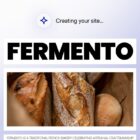Matt Mullenweg Announces WordPress 5.0 Release Plan, Estimates Release Candidate to Ship in November
Selectors That Depend on Layout
“Why the heck don’t we have ::first-column?”
I heard someone ask that the other day and it’s a valid question. I’d even take that question further by asking about ::nth-column() or whatever else relates to CSS columns. We have stuff like ::first-letter and ::first-line. Why not others?
There are many notable things missing from the “nth” crowd. Seven years ago, I wrote “A Call for ::nth-everything” and it included clear use cases like, perhaps, selecting the first …
The post Selectors That Depend on Layout appeared first on CSS-Tricks.
Doc Pop News Drop: GutenbergCloud and the Gutenberg Module for Drupal
The post Doc Pop News Drop: GutenbergCloud and the Gutenberg Module for Drupal appeared first on Torque.
7 Button Design Guidelines for WordPress That You Need to Know About
The post 7 Button Design Guidelines for WordPress That You Need to Know About appeared first on Torque.
Apply a Filter to a Background Image
You can apply a filter to an entire element quite easily with the filter property. But what if you want to apply a filter just to the background of an element? It’s weirdly tricky.
There are CSS properties that specific to backgrounds, like background-blend-mode — but blending and filters are not the same thing. It sorta seems to be the reason we have backdrop-filter, but not quite. That does filtering as the background interacts with what is behind the …
The post Apply a Filter to a Background Image appeared first on CSS-Tricks.
Netlify
(This is a sponsored post.)
It’s always fun to watch developers discover Netlify for the first time. It’s so easy. One way to do it is to just literally drag and drop a folder onto them and it will be online. Even better, connect a Git repo to a Netlify site and tell it what branch you want to watch, then any commits to that branch will automatically go live, even running your site’s build as it does it. …
The post Netlify appeared first on CSS-Tricks.




